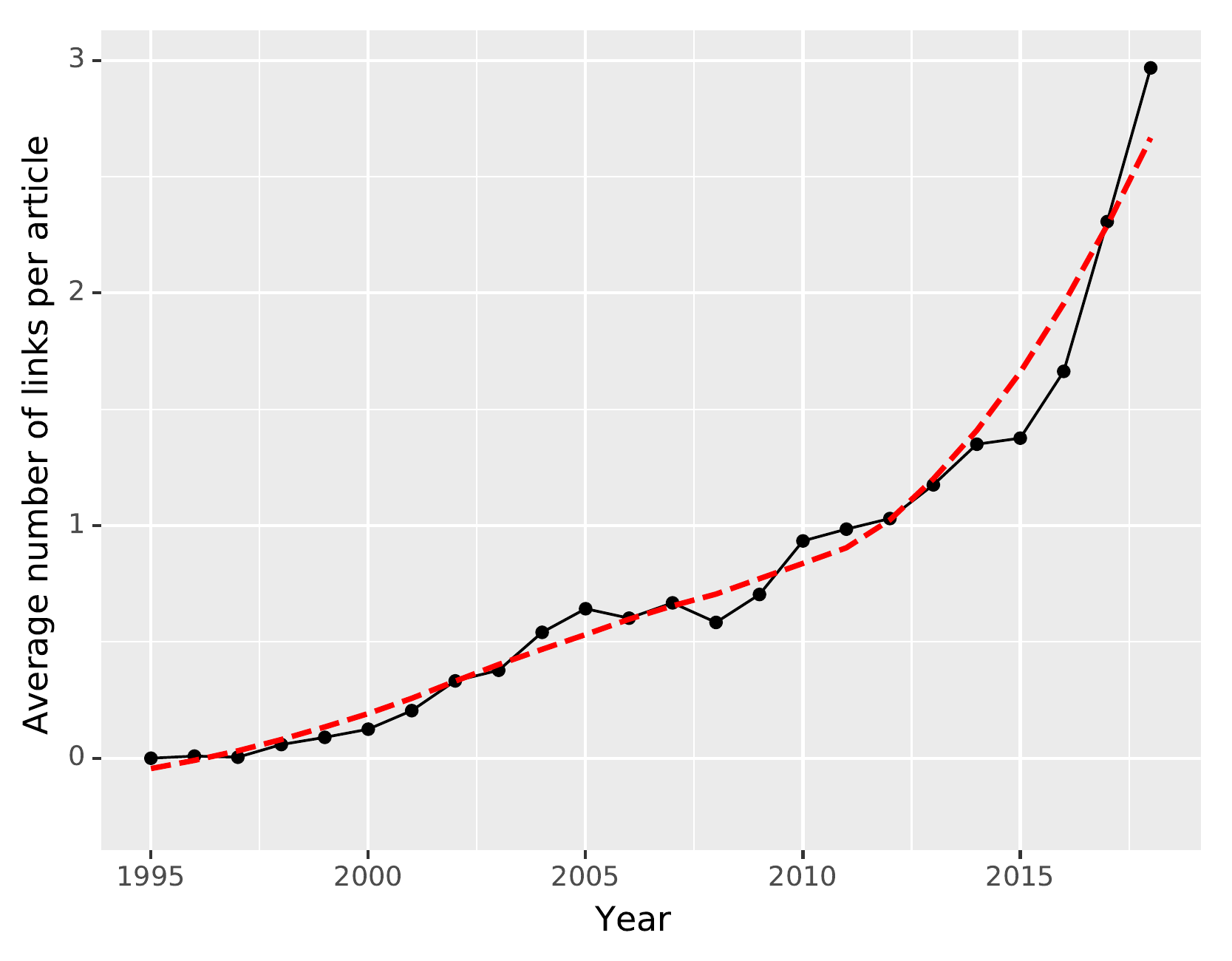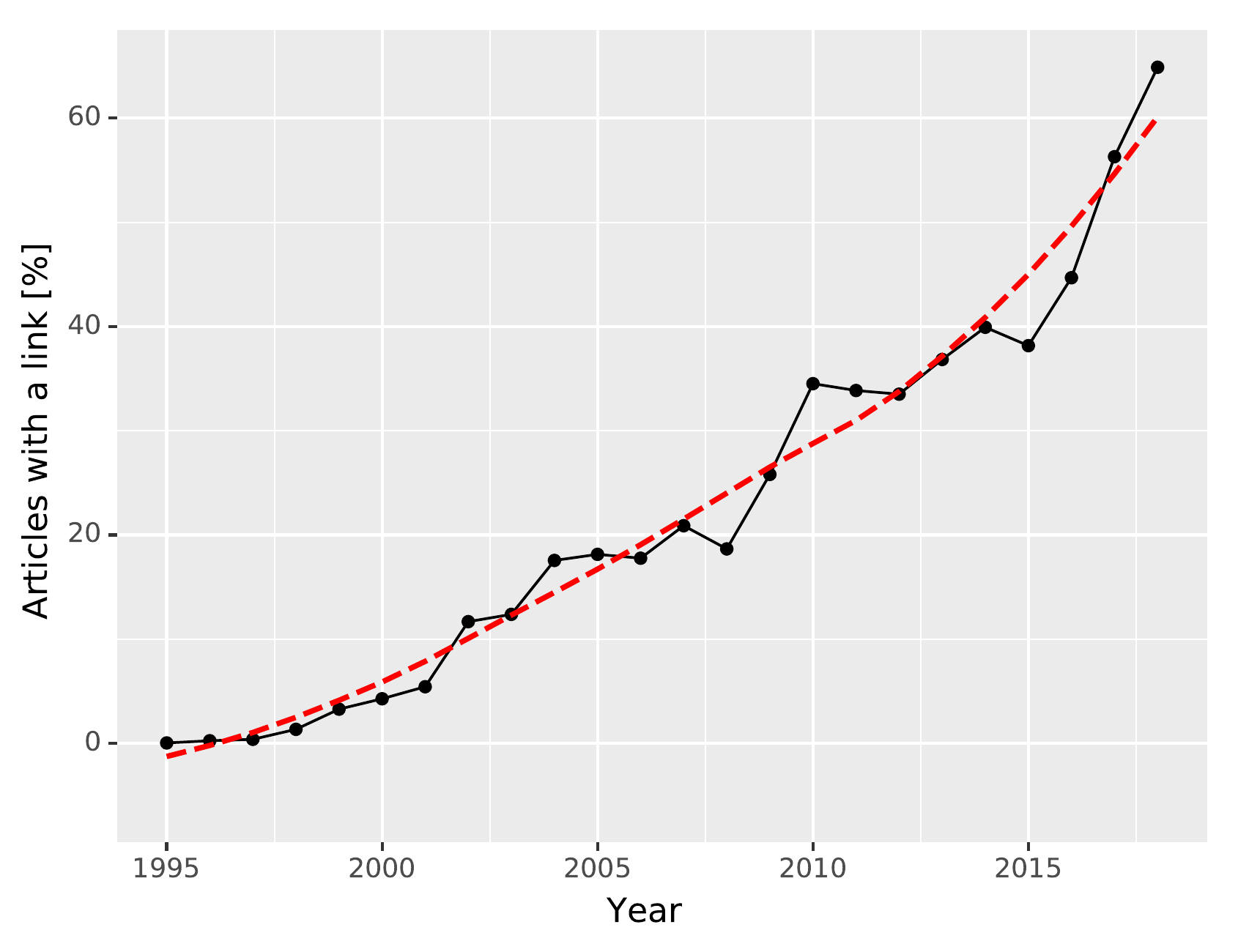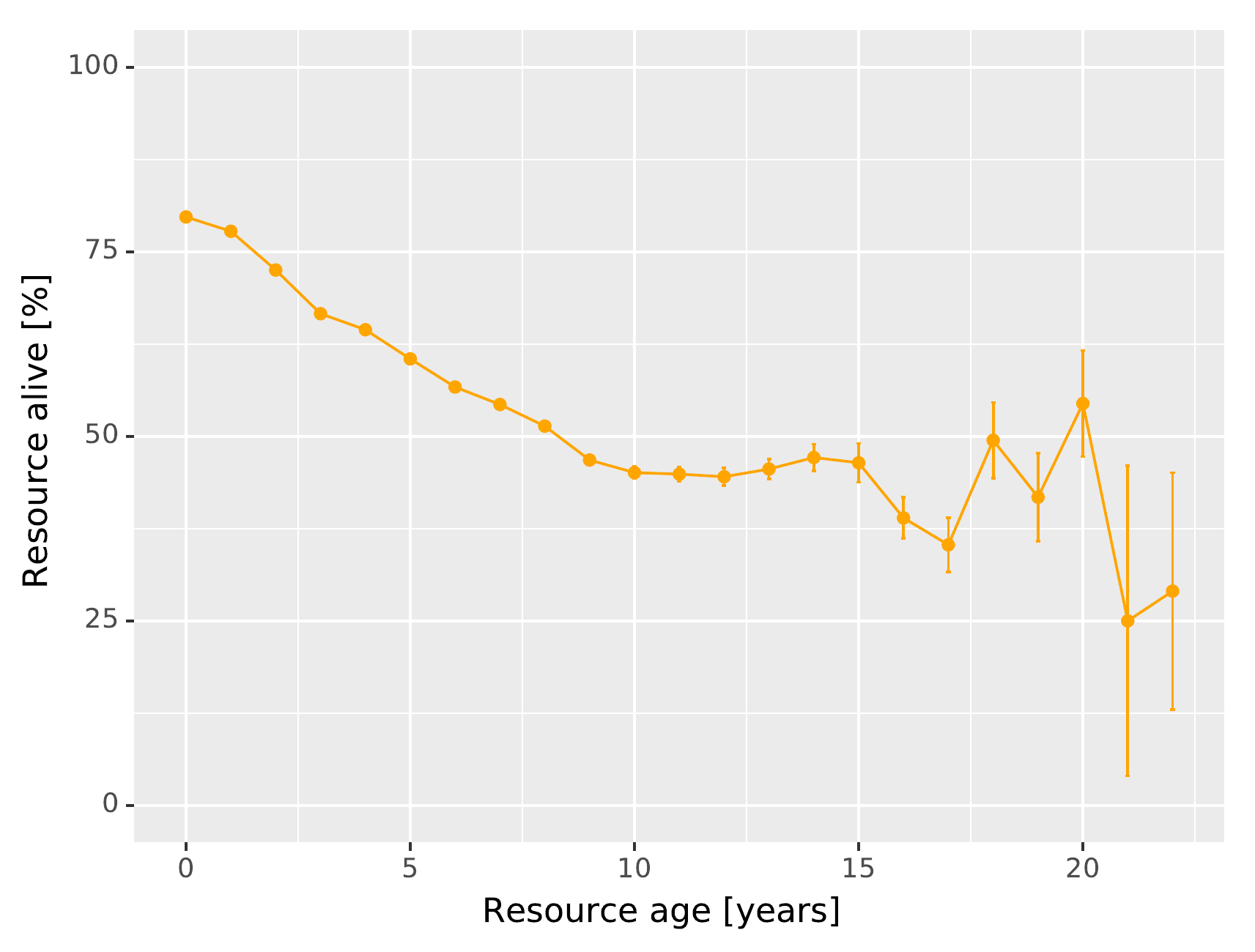1 Introduction
Reproducibility and replicability are key components of science. Increasingly, this depends on the ability of scientists to use the resources shared in scientific articles. Many studies have found that resources embedded in scientific publications suffer from decay over time [1–6] directly affecting the incremental nature of science. In particular, biomedical sciences is a discipline that reuses resources regularly (e.g., software [7], protocols [8], and datasets [9]). However, a systematic study of the decay of such resources in biomedical publications is lacking.
The mechanisms governing sharing of data and resources are important for science. As early as 2003, the National Institutes of Health published a policy requiring applications for grants greater than $500,000 to include data sharing plans [10]. The National Science Foundation also has policies encouraging data sharing [11]. There are other institutions that recognize the importance of this practice (e.g., [12,13]) and its actual impact on the acceleration of science(e.g., [9]). Sharing of resources is important and how they decay is still poorly understood.
One way of understanding how long and why resources are available is to analyze how resources decay over time. Several studies have tried to understand thisphenomenon in several disciplines. All this previous work has focused mostly on closed access publications and, to the best of our knowledge, the biggest dataset has around 1 million URLs [5,6]. In our work, we examine resource decay at a significantly larger volume in open access biomedical articles.
2 Materials and Methods
We obtained a copy of Pubmed Open Access Subset in June 2018 which consists of 1,904,971 articles. Not all URLs in these files are interesting or represent a resource being shared. We apply the following filters to discard URLs. First, we remove links to local file systems, URLs without any paths, and we canonicalize the URLs. The URL availability checker followed standard detection methods [17]. This checker, however, does not consider resources that are available but moved from the original URL. The final dataset contains 2,642,694 URLs of which 1,883,622 are unique.
3 Results
3.1 Exponential Growth in Link Sharing.
We wanted to examine how resource sharing in the form of URLs has evolved over time. For each year of publication, we computed the number of links per article. This trend is exponential (Figure 1 (a)). We also analyze the percentage of articles with at least one URL. We found that this trend is exponential and that articles published today are more likely than not to have a link to a resource (Figure 1 (b)).


See Figure 1 for examples. In particular, Figure 1 (b).
3.4 Top Cited Links Are Mostly Tools.
We performed a qualitative analysis of the most shared links and their availability. Interestingly, most of these highly cited links were tools related to gene expression and sequence search.
4 Discussion and conclusion
The practice of embedding links in scientific papers has been growing exponentially, and our findings are in line with previous research [15,3]. While we found a half-life of 8 years, there is great variability in this number—2.2 years [2], 5 years [4], 5.3 years [2], 9.3 years [15], 10 years [14]. However, all this previous work has analyzed a smaller volume of links and shorter time spans compared to our analysis, which may explain this variability.
While our findings are only correlations, they offer some intuitive suggestions. We would propose that authors use shorter, easier to remember URLs, hosted in non-profit domains. For links that are available, we should consider archiving those that are old, have complex URLs, are published in low h-index journals, and are hosted in country-based domains. In none of this is possible, we can explicitly archive links with services such as Perma [16], the Internet Archive [22], and WebCite [23,24].
Citation
@inproceedings{zeng2019,
author = {Zeng, Tong and Shema, Alain and E Acuna, Daniel},
editor = {Greene Taylor, Natalie and Christian-Lamb, Caitlin and H.
Martin, Michelle and Nardi, Bonnie},
publisher = {Springer, Cham.},
title = {Dead {Science:} {Most} {Resources} {Linked} in {Biomedical}
{Articles} {Disappear} in {Eight} {Years}},
booktitle = {Information in Contemporary Society. iConference 2019.},
series = {Lecture Notes in Computer Science},
volume = {11420},
pages = {170 - 176},
date = {2019-03-13},
url = {https://link.springer.com/chapter/10.1007/978-3-030-15742-5_16},
doi = {10.1007/978-3-030-15742-5_16},
langid = {en},
abstract = {Scientific progress critically depends on disseminating
analytic pipelines and datasets that make results reproducible and
replicable. Increasingly, researchers make resources available for
wider reuse and embed links to them in their published manuscripts.
Previous research has shown that these resources become unavailable
over time but the extent and causes of this problem in open access
publications has not been explored well. By using 1.9 million
articles from PubMed Open Access, we estimate that half of all
resources become unavailable after 8 years. We find that the number
of times a resource has been used, the international (int) and
organization (org) domain suffixes, and the number of affiliations are
positively related to resources being available. In contrast, we
found that the length of the URL, Indian (in), European Union (eu),
and Chinese (cn) domain suffixes, and abstract length are negatively
related to resources being available. Our results contribute to our
understanding of resource sharing in science and provide some
guidance to solve resource decay.}
}
